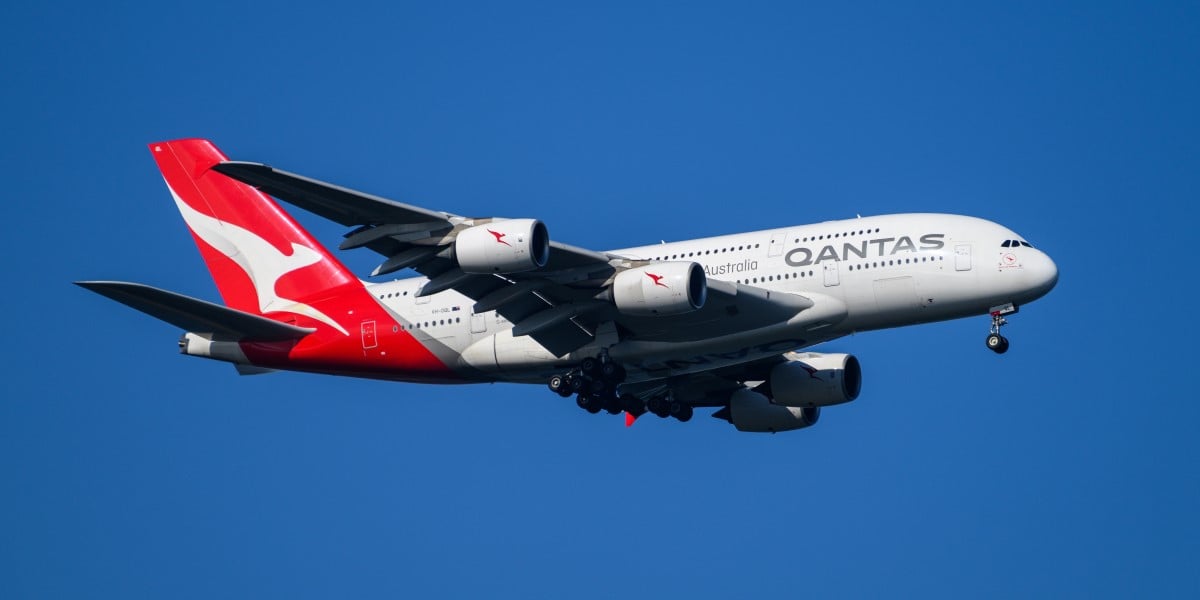
An Airbus A380 operated by Australian airline Qantas clocked over 290 hours of flight time despite a tool having been left inside one of its engines, according to a report from the Australian Transport Safety Bureau. The meter-long nylon turning tool was used during an inspection of the left outer engine's intermediate-pressure compressor on December 6 of last year, during a three-day routine maintenance check at Los Angeles Airport (LAX). It was left in the engine by a maintenance worker who departed his shift early for medical reasons.
The worker was told to leave it in place, as it was still in use, and assumed a colleague would ensure the tool was removed. Over the course of the three-day inspection period, multiple engineers rotated shifts. It was noted that the tool had not been returned after being checked out.
Maintenance crews did search for the tool, but it wasn’t found during two inspections – first because it was dark and an engineer didn't use a flashlight, and the second time because the inlet cowl where it sat was not examined. According to the Safety Bureau report , at least some of the engineers didn't even realize what part they were looking for and thought the missing tool was a larger gearbox turning tool. If it had been the gearbox tool, it would have been reasonable to assume it would be more visible inside the engine.
A missing tool report was lodged in software used to manage maintenance – but the required follow-up never happened. Despite the fact the tool was known to be missing, the giant jet was signed out of maintenance and allowed to fly. Qantas personnel in Sydney even requested removal of the report as it was causing problems – in response, the tool's status was downgraded.
Thirty-four flight cycles and 293.74 flight hours later, the tool was found during another routine scheduled maintenance session – nearly a month after it had been lost. It was found lodged behind the low-pressure compressor (LPC) blades.
The Safety Bureau noted that there was no observable damage to any engine components. However, the incident did cause damage to the tool, as it was deformed by airflow. As you’d expect after nearly 300 hours in the challenging environment of a jet engine.
The board noted that had the tool been left in a different position – for example in front of the low-pressure compressor – it may have been more visible to the engineers. It also would have caused more damage in that position, as it would pass through the rotating LPC blades during flight. The turning tool spotted – Click to enlarge The mishap has been chalked up to having a rotating crew of maintenance workers, and bad advice to leave the tool in place – which diminished any sense of ownership and accountability for its whereabouts.
Qantas has taken action. It filed an internal incident report when the tool was found, and briefed staff on the importance of using tracking software – and presumably not leaving them in the engines of an A380. In March it completed an internal investigation and issued engineers a safety directive on tools.
The affected aircraft continues to operate in Qantas's fleet – which is quite a lucky outcome. The Register spoke to two aircraft engineers about the incident – both of whom requested anonymity. "Any Foreign Object Debris (FOD) can lead to catastrophic engine failure," summarized one of the aviation professionals.
"Standard practice is to check tools in and out to prevent this." "There would be negligible impact to performance, though the safety risk would be quite large. The odds of a tool such as this causing a catastrophic engine failure would be quite high," explained the other.
"While the engine failure wouldn't necessarily lead to loss of the aircraft, the debris could." "The fact the tool was left on the aircraft is a severe breach of flight line safeguards, where all tools should be accounted for before the aircraft is returned to service," he added. The crashes of Southwest Airlines Flight 1380 in 2018 and that of United 232 in 1989 were both attributed to uncontained engine failures caused by loose debris, though neither was a result of an errant tool.
In both cases, engine components broke apart and debris escaped the engine casing. The Southwest Airlines incident resulted in one fatality and many injuries, while the United Airlines crash led to 111 fatalities. The aviation industry has faced much scrutiny lately over safety.
Notably, the US Department of Justice lodged a criminal investigation this year against Boeing when an aircraft door plug blew out of a 737 MAX 9 flight in January. It's also recently experienced labor strikes from well-known airplane makers – including Textron and Boeing – as unionized workers seek better pay and working conditions. ®.














